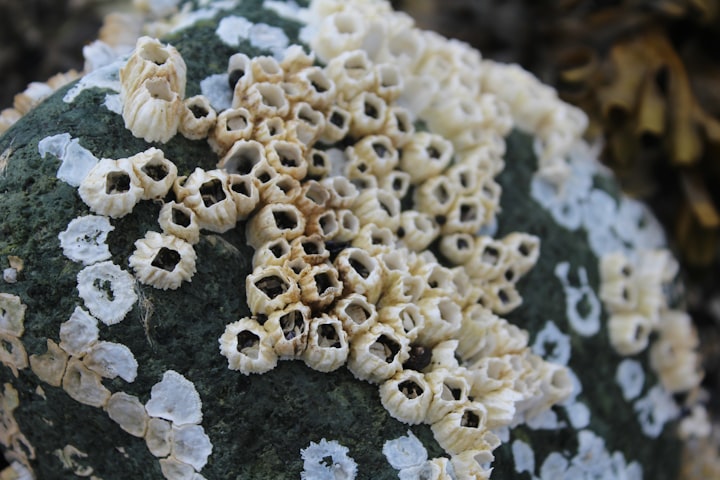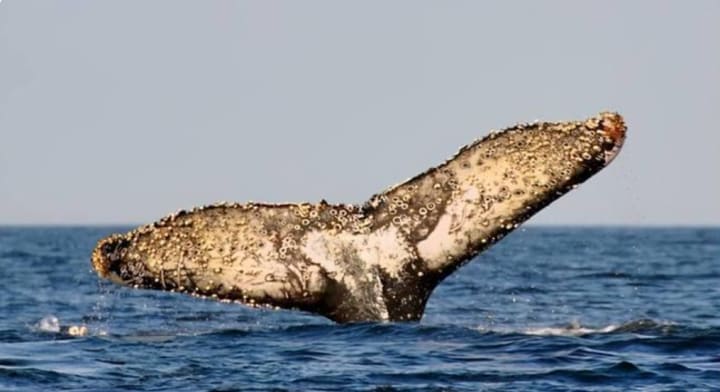
The Life of a Barnacle
For the ocean giant blue whales, barnacles are one of the creatures they dare not mess with. This is because blue whales cannot harm barnacles, but barnacles parasitism them and use them as mobile vehicles.
You can find barnacles on the reefs by the sea, or on the seaside fences and around the piers if you look carefully. Barnacles are a member of the sessile order of Arthropods, a phylum of jaws, and although they look very similar to shellfish creatures, the two are very distantly related.
The barnacles we see most often are barnacles attached to reefs or adult barnacles such as blue whales and sea turtles, which at this point in their lives are unable to move and can only rely on their tentacles to reach out to the surrounding waters and then filter plankton from the seawater as a way to feed.
In fact, at the beginning of their hatching, barnacles can float as well as swim, and at this stage, they will feed on plant plankton in the water, at which point they are in the node less larval stage.
When they reach the glandular larval stage, their individuals still have swimming skills, but they stop feeding and start looking for suitable places to live.
In the larval stage, they have two mollusk-like hard shells to protect themselves, six pairs of foot-like paraplegia to move their bodies, and two pairs of tentacles in front to find suitable places for parasitism, with attachment discs on the tentacles that can secrete mucus to keep themselves attached.
It is important to know that the choice of place for barnacle parasitism is very important for barnacles, once they choose the wrong place, they may die as a result. So when they are just attached, they are still able to leave the place once they perceive that the surrounding environment is not suitable for parasitism, and only after they are sure that the place can survive, the adhesive substance secreted by their attachment discs will firmly attach them to the place.
For barnacles, suitable places for parasitism are often places where the seawater is not deep and the current is slow, if the current is too fast, it will be difficult for them to attach here.
After successful attachment, they will metamorphose into the barnacles we often see again.
A barnacle on a whale
The reason why barnacles are ideal for barnacles is that whales are slow swimmers and have very rough skin, which is conducive to parasitism. Coupled with the fact that whales are organic, parasitism on whales is equivalent to placing a home in a rice bowl.
For whales, barnacle parasitism increases their weight, but many whales are so heavy that even paraphrasing many barnacles has little effect on them.
Only the skin of the whale will slowly shed under metabolism, which will also make the barnacles slowly shed. To parasitism the whale, the barnacles would try to imbued themselves deep into the whale's skin, and the section shows that the barnacles would probably imbued themselves in the whale's skin, rather than simply sticking to the outside of the whale's skin.
The thickness of thanklessness is so thick that it can be as big as your fist, so even if the barnacles try to set in the whale's skin, it will have almost no effect on them. Even the barnacles on the whale's body are equivalent to the whale's ID card, and some scientists familiar with this group of whales are canonize each of them individually by the location of the barnacles, as well as the color change.
Although most of the barnacles parasitism the skin surface of the whales, there are a small number of barnacles that do not choose the right place to parasitism the private parts of the whales, so what effect does this have on the whales?
Scientists have observed many barnacles around the reproductive organs of a stranded and dead sperm whale, and the number of individuals of these barnacles does not seem to be small. However, it is important to know that although whales are also mammals, their reproductive organs are hidden in their abdominal cavity and are only exposed when needed.

The barnacle parasites are only around the reproductive organs, not their reproductive organs, so it does not affect their mating.
Of course, if a whale has too many barnacles on its body, although it will not cause them pain and normal life, it may slow down its swimming speed and consume more energy, which is very bad for whales that need to migrate long distances, so the whales sometimes clean the barnacles on their bodies by slapping the water, reefs or even ships to reduce their weight.
Summing up
Although barnacles are a kind of small seafood, the characteristics of barnacles themselves make them often attached to the dock, the bottom of the ship, or even the seaside pipeline, which not only increases the cost of cleaning, but also reduces the service life, reduces the sensitivity of precision instruments, and brings greater losses to human beings.
Although people have thought of many ways to deal with barnacles but have not to haven able to completely solve the problems caused by barnacles.
About the Creator
Stajila
The progress of scientific research and its increasingly expanding fields will arouse our hope。






Comments
There are no comments for this story
Be the first to respond and start the conversation.